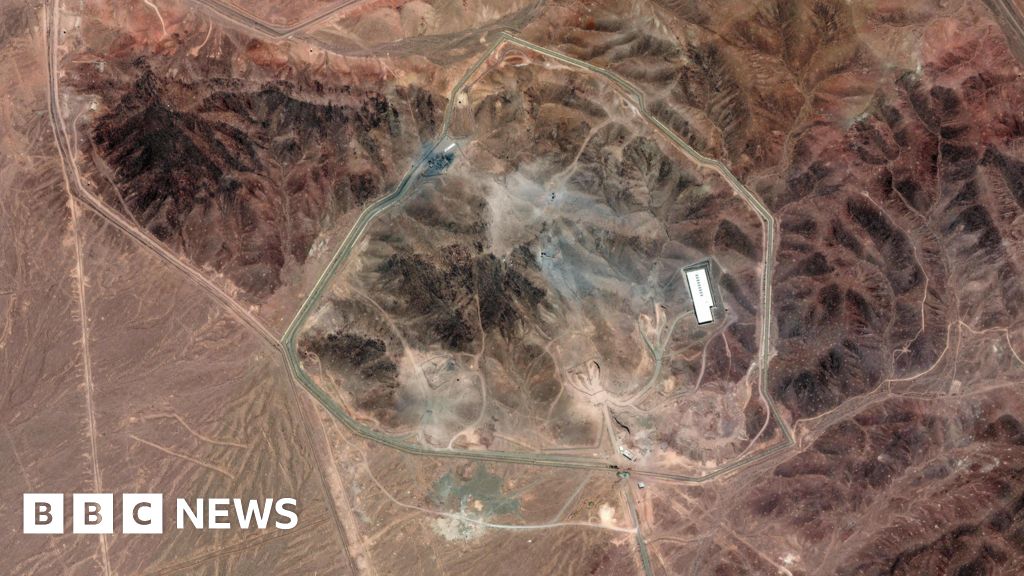The head of the CIA has said US strikes "severely damaged" Iran's nuclear facilities and set them back years, diverging from a leaked intelligence report that angered President Donald Trump by downplaying the raid's impact. John Ratcliffe, the US spy agency's director, said key sites had been destroyed, though he stopped short of declaring that Iran's nuclear programme had been eliminated outright. It comes a day after a leaked preliminary assessment from a Pentagon intelligence agency suggested core components of Iran's nuclear programme remained intact after the US bombings. President Trump again maintained the raid had "obliterated" Iran's nuclear facilities. The Republican president took to social media on Wednesday to post that the "fake news" media had "lied and totally misrepresented the facts, none of which they had". He said Secretary of Defence Pete Hegseth and other military officials would hold an "interesting and irrefutable" news conference on Thursday at the Pentagon "in order to fight for the Dignity of our Great American Pilots". It came as Israel and Iran seemed to honour a fragile ceasefire that Trump helped negotiate this week on the 12th day of the war. Speaking at The Hague where he attended a Nato summit on Wednesday, Trump said of the strikes: "It was very severe. It was obliteration." He also said he would probably seek a commitment from Iran to end its nuclear ambitions at talks next week. Iran has not acknowledged any such negotiations. But US Middle East envoy Steve Witkoff told US network NBC there has been direct and indirect communication between the countries. Ratcliffe's statement said the CIA's information included "new intelligence from an historically reliable and accurate source/method that several key Iranian nuclear facilities were destroyed and would have to be rebuilt over the course of years". Director of National Intelligence Tulsi Gabbard has also come out in support of Trump's assessment on the damage to Iranian nuclear facilities. "If the Iranians chose to rebuild, they would have to rebuild all three facilities (Natanz, Fordo, Esfahan) entirely, which would likely take years to do," she wrote on X. The US operation involved 125 military aircraft, targeting the three main Iranian nuclear facilities on Saturday. New satellite images show six craters clustered around two entry points at Fordo, with similar craters spotted at Isfahan. But it is unclear if the nuclear facilities located deep underground were wiped out. A report from the Pentagon's Defense Intelligence Agency was leaked to US media on Tuesday, estimating that the US bombing had set back Iran's nuclear programme "only a few months". The US defence secretary said that assessment was made with "low confidence". Officials familiar with the evaluation cautioned it was an early assessment that could change as more information emerges. The US has 18 intelligence agencies, which sometimes produce conflicting reports based on their mission and area of expertise. UN nuclear watchdog chief Rafael Grossi said on Wednesday that there is a chance Tehran moved much of its highly enriched uranium elsewhere as it came under attack. But Iranian foreign ministry spokesman Esmail Baghaei told Al Jazeera on Wednesday: "Our nuclear installations have been badly damaged, that's for sure." He did not elaborate. A report by the Israeli Atomic Energy Commission said the strike on Fordo "destroyed the site's critical infrastructure". The damage across all the sites, the report said, has pushed Iran's timeline for nuclear weapons back by "many years". Yet Mehdi Mohammadi, an adviser to the chairman of the Iranian parliament, said shortly after the US strikes that "no irreversible damage was sustained" at Fordo. Iran has long maintained that its nuclear programme is peaceful. US intelligence agencies have previously said Tehran was not actively building atomic weapons.
CIA director says Iran's nuclear sites 'severely damaged'
TruthLens AI Suggested Headline:
"CIA Director Claims Significant Damage to Iran's Nuclear Facilities from US Strikes"
TruthLens AI Summary
The CIA director, John Ratcliffe, has stated that recent U.S. military strikes have significantly damaged Iran's nuclear facilities, asserting that these attacks have set back Iran's nuclear program by several years. This assertion contrasts sharply with a leaked Pentagon intelligence report that suggested the core components of Iran's nuclear program remained largely intact after the strikes. Ratcliffe indicated that key sites were destroyed but did not claim that Iran's nuclear capabilities had been completely eradicated. President Donald Trump, who has consistently maintained that the strikes were devastating, expressed frustration over the conflicting intelligence assessments. He characterized the attacks as having 'obliterated' Iran's nuclear facilities and criticized the media for misrepresenting the facts surrounding the operation. Trump also hinted at potential negotiations aimed at curbing Iran's nuclear ambitions, although Iranian officials have not confirmed any such discussions.
The U.S. operation, which involved 125 military aircraft targeting three main Iranian nuclear sites, has led to mixed responses regarding the extent of the damage. While satellite imagery shows significant destruction at sites like Fordo and Isfahan, there are questions about the effectiveness of the strikes against facilities that are deep underground. The leaked Pentagon report estimated that the strikes had only temporarily delayed Iran's nuclear advancements, a claim met with skepticism by some officials who noted the preliminary nature of the assessment. The Iranian government, while acknowledging damage to its nuclear installations, has downplayed the impact of the strikes, asserting that no irreversible harm was done. Meanwhile, reports from Israeli intelligence suggest that the damage could set back Iran's nuclear timeline by many years, further complicating the geopolitical landscape surrounding Iran's nuclear capabilities and U.S. foreign policy in the region.
TruthLens AI Analysis
You need to be a member to generate the AI analysis for this article.
Log In to Generate AnalysisNot a member yet? Register for free.
